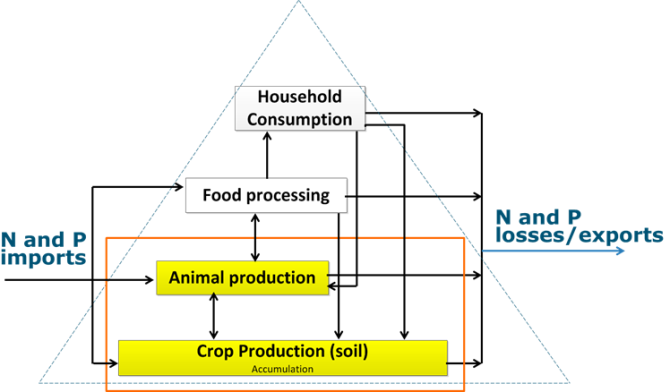NUFER
The NUFER (NUtrient flows in Food chains, Environment and Resources use) model quantifies nitrogen (N) and phosphorus (P) flows in food chains and nutrient use efficiencies. In NUFER, the food chain consists of four main compartments: crop production, animal production, food processing, and household consumption (see Figure below). N and P cycling is modelled within and across these compartments, which includes nutrient imports to and exports from the compartments. For example, nutrient imports to crop production are synthetic and organic fertilisers, and exports are crop yields and losses of N and P to the environment. Nutrient losses to the environment include N losses to air (such as ammonia, nitrous oxide), and N and P losses to water systems (through leaching, for example).
NUFER is used for China and for the period of 1980–2030. The model has been implemented at different spatial scales: national, province, agro-ecological zones, and county. One unique feature of NUFER is that it accounts for trends in the industrialisation of animal production in China since the 1990s. These trends have resulted in adverse environmental impacts on water quality. NUFER has been widely used for scenario analyses to reduce future environmental pollution from Chinese agriculture.
Main publications
-
Nitrogen and phosphorus use efficiencies and losses in the food chain in China at regional scales in 1980 and 2005.
Science of the Total Environment (2012), Volume: 434 - ISSN 0048-9697 - p. 51-61. -
Modeling nutrient flows in the Food Chain of China
Journal of Environmental Quality (2010), Volume: 39, Issue: 4 - ISSN 0047-2425 - p. 1279-1289.
